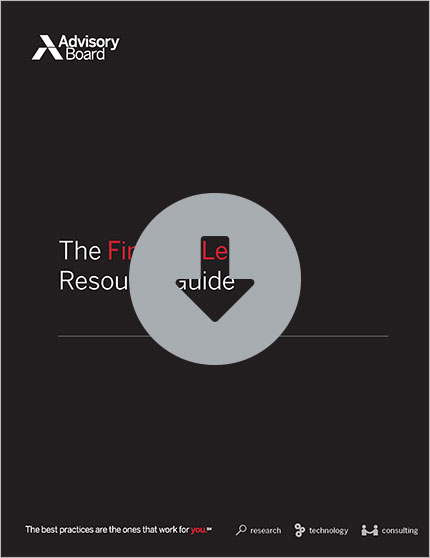Auto logout in seconds.
Continue LogoutRead Advisory Board's take: Why this is a perfect example of "systemness"
Health care facilities that need expensive medical equipment often have two options: buy the equipment outright or rent it. But Kaiser Permanente came up with an alternative solution that eventually led to an Amazon Prime-like ordering service that saved the health system $8.6 million in two years alone, Beth Jones Sanborn reports for Healthcare Finance.
A unique solution to a costly dilemma
Ronald Loo, chair of the Kaiser's Inter-Regional Chiefs of Urology and co-lead of Kaiser's Health Innovation Team, said the idea was born about 10 years ago, when Kaiser was preparing to open a procedure center. The center was going to need a so-called shock wave machine, which uses sound waves to break up kidney stones instead of surgery.
But while it's important to have on hand, Jones Sanborn reports that those machines are rarely used—often only about once a week—and cost about $500,000 to purchase. Rental costs also would run high, according to Loo.
So Loo did some research and discovered a few sister centers that were each renting the same machine. Rather than have each center pay a rental company for the machines, Loo decided to buy one machine that could be shared among them.
They created a schedule, and each center got the machine on a different day. Loo hired external technicians to transport the machine to each location as part of a pilot that was dubbed the "Loo Haul."
Within one year, the Loo Haul saved $500,000, according to Loo. "I essentially saved enough money to buy a new machine every single year if that's what we wanted to do."
Kaiser's version of Amazon Prime
After seeing initial success, Kaiser sought to build on the program and make it work similarly to Amazon Prime, Loo said. Under the Prime-like model Loo envisioned, clinicians would be able to use a system to order something they'd need rather than calling to rent it.
To make the idea a reality, Kaiser worked with Cohealo, a technology-enabled services company that increases utilization of health system capital equipment. Today, the program includes four million members and several hundred locations.
The goal, at the outset, was to save on avoided rentals and avoided capital spending on new equipment. Over the last two years, Kaiser has succeeded on those fronts, saving $8.6 million under the program, Jones Sanborn reports.
But perhaps "more importantly," Jones Sanborn writes, "the program has opened their eyes to the true utilization of all equipment."
Loo said, "For any of the executives that are out there, if they walk into any of their hospitals and they turn to somebody in the hospital and they point to a piece of equipment and they ask 'can you tell me how often we use this piece of equipment or when is the last time we used it or what's our cost per case for this equipment?' nobody will be able to tell them that."
Now, Kaiser knows how frequently equipment is used, where it's used, and by whom.
"It's like Goldilocks. You don't want to have too much or too little of anything," Loo said. "For a system like ours, what that translates into are more dollars available to protect patient care. That's the story" (Jones Sanborn, Healthcare Finance News, 1/22).
Advisory Board's take

Emily Connelly, Senior Consultant, Health Care Advisory Board
I like this story for two reasons. First, it shows us the silver lining on the cloud of financial strain facing so many hospitals and health systems: these challenges are spurring problem solving and generating innovative solutions. As their margins decline, provider organizations will need to keep getting creative in finding efficiencies in all aspects of their operations in order to find the savings they will need.
“[Cost] challenges are spurring problem solving and generating innovative solutions.”
Second, this is a great example of how it actually is possible to find cost reduction opportunities through "systemness." As many experts have observed, mergers and acquisitions (M&A) among providers haven't always generated the economies of scale many had hoped for. As health systems grow, they tend to end up with the same cost structures replicated in multiple locations. But with this "Loo Haul" example, we see a system finding a way to tap into the systemness advantage—maximizing the ROI on an expensive resource by coordinating and sharing between sites. This is just one example of the potential advantages and savings opportunities available to providers that are part of a system, especially if the system's facilities are geographically close to each other. There are many other options out there if system and site leaders can keep their focus on finding and realizing those opportunities.
Hospitals and health systems will need to use a mix of innovative and tried-and-true cost containment strategies to maintain their margins. Our recent research report, Toward True Sustainability, includes profiles of organizations implementing a wide range of tactics to manage expenses. Download the briefing to see more examples of how "systemness" can work in action.
Learn more: 8 lessons on building a cost-disciplined enterprise
Explore the characteristics of cost-disciplined organizations and examine the role of hospital and health system executives in achieving sustainable expense growth.
Don't miss out on the latest Advisory Board insights
Create your free account to access 1 resource, including the latest research and webinars.
Want access without creating an account?
You have 1 free members-only resource remaining this month.
1 free members-only resources remaining
1 free members-only resources remaining
You've reached your limit of free insights
Become a member to access all of Advisory Board's resources, events, and experts
Never miss out on the latest innovative health care content tailored to you.
Benefits include:
You've reached your limit of free insights
Become a member to access all of Advisory Board's resources, events, and experts
Never miss out on the latest innovative health care content tailored to you.
Benefits include:
This content is available through your Curated Research partnership with Advisory Board. Click on ‘view this resource’ to read the full piece
Email ask@advisory.com to learn more
Click on ‘Become a Member’ to learn about the benefits of a Full-Access partnership with Advisory Board
Never miss out on the latest innovative health care content tailored to you.
Benefits Include:
This is for members only. Learn more.
Click on ‘Become a Member’ to learn about the benefits of a Full-Access partnership with Advisory Board
Never miss out on the latest innovative health care content tailored to you.


